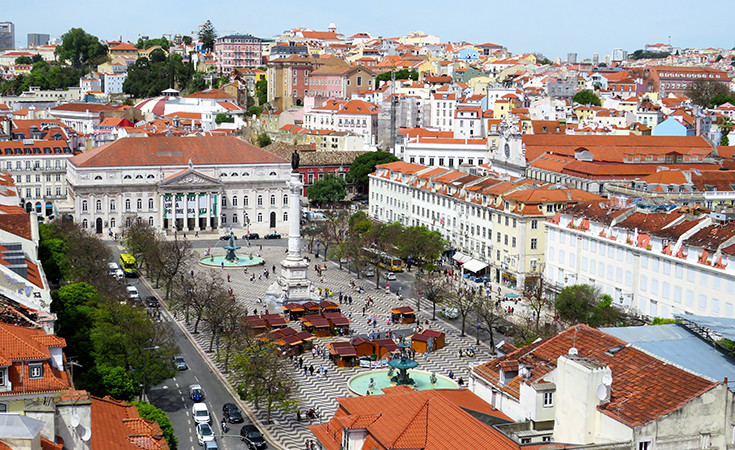
The Rossio Square is one of the most popular Lisbon squares. Both tourist and locals find it attractive because it is the most cheerful and liveliest square in Lisbon. Surrounded by architecturally beautiful buildings and baroque fountains with one monument in the middle of the square, it is really the right place to enjoy, play with children, drink coffee or read a book. The monument in the center of the square is dedicated to Pedro IV, and the female statues of the monument symbolize wisdom, beauty, strength and justice.
The square is paved with a couple of trees that do not provide shade, so the square is one of the sunniest places in Lisbon. The square was built in the 19th century and even then it was paved with winding gray-white tiles of unusual design that can be seen on the streets of Lisbon, but also in some other cities in Spain and South America. In the 15th century, public executions were organized on today's square. The National Theater "Dona Maria II" is located on the square, and in front of it there is a statue of the writer Gil Vicente. The grand green-white fountain is a place where visitors of the square, as well as birds, are happy to cool off.
Music from cafes and restaurants can be heard from the side. The most visited coffee bar on the square is "Cafe Nicola", a coffee bar that is over 200 years old, and is one of the oldest in Lisbon. The square is located in a neighborhood called Baixa, which in addition to the square is adorned with narrow streets, which house restaurants and boutiques, as well as souvenir shops. This square is also one of the most popular places to meet and greet friends. Near the square is the Rossio train station, opened in 1887. Beautiful, old and unusual, and certainly a more famous tourist attraction.
On one side a monument, on the other a fountain, sometimes an art installation, white marble benches, busy every day, music and noise, old historical cafes - all these are the symbols of this place. It is known as a place where poets often met and socialized during the 19th century.
Author of the text:

Maja Glavaš, Bachelor with Honours in Communicology. Works in Tourism.
Contact: [email protected]; instagram: travel_europe1